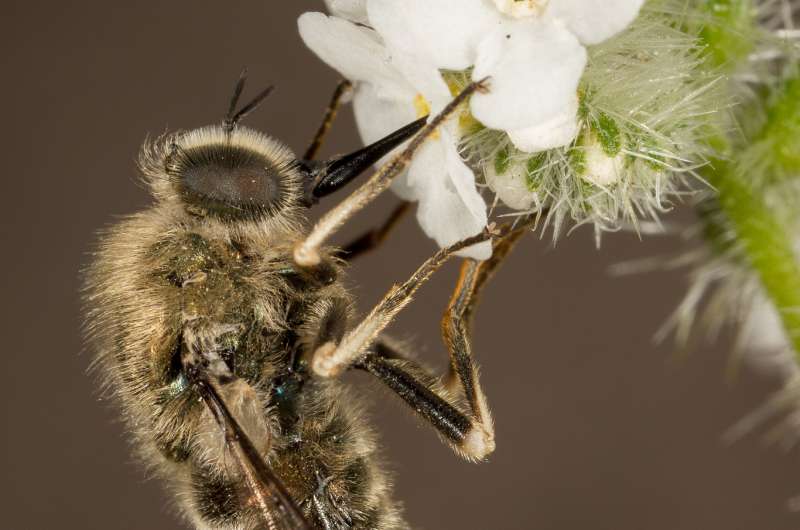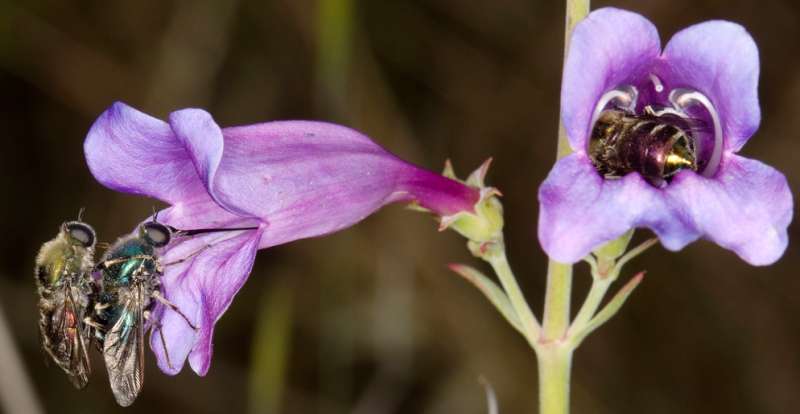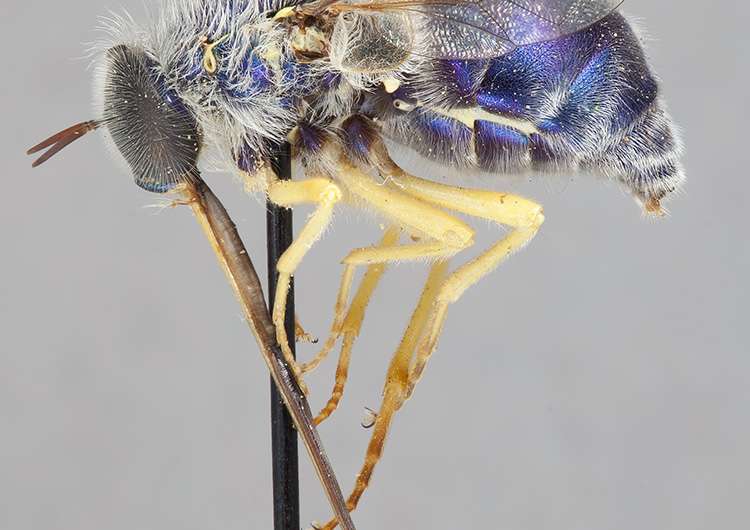Flying jewels spell death for tarantulas: Study of a North American spider fly genus

Spider flies are usually a rarely encountered group of insects, except in Western North America, where the North American jewelled spider flies (the Eulonchus genus) can be locally abundant in mountainous areas such as the Sierra Nevada of California. The brilliantly coloured adults (also known as 'sapphires' and 'emeralds') are important pollinators of flowers.
The North American jewelled spider flies typically have large rounded bodies covered with dense hairs and metallic green to blue or even purple colouration, giving them a jewel-like appearance. Together, the elongated mouthparts, the metallic coloration and the eyes, covered with soft hairs, immediately set these flies apart from any other group of tarantula fly. The mouthparts are greatly elongated to help them feed on nectar from the flowers of more than 25 different plant families and 80 species.
However, their larvae are more insidious, seeking out and inserting themselves into tarantula hosts and slowly eating away their insides until they mature and burst out of the abdomen, killing the spider, and leaving behind only the skin. Once they have emerged from the host, they pupate to develop into adults.
In the present study, published in the open access journal ZooKeys, six species of the genus are recognized in North America, including one from the Smokey Mountains, and five from the West, ranging from Mexico to Canada. Drs Christopher J. Borkent and Shaun L. Winterton, and PhD student Jessica P. Gillung, all affiliated with the California State Collection of Arthropods, USA, have redescribed all of them using cybertaxonomic methods of natural language description. A phylogenetic tree of the relationships among the species is also presented.

The examined individuals include many from the collection amassed by the late Dr. Evert Schlinger (1928-2014) over the span of more than 60 years. Today, the collection resides at the California Academy of Sciences (CAS). "Dr. Evert I. Sclinger was a world renowned expert on spider fly taxonomy and biology," write the authors in the paper, which they dedicate to the scientist and his legacy.
All of the studied flies are relatively widely distributed, and locally abundant, except for a single species (E. marialiciae), which is known from only a few specimens, collected within a small contiguous area in the Great Smoky Mountains. However, the scientists suggest that future studies are needed to explore whether this is actually their full range.

More information: Christopher J. Borkent et al, Jewelled spider flies of North America: a revision and phylogeny of Eulonchus Gerstaecker (Diptera, Acroceridae), ZooKeys (2016). DOI: 10.3897/zookeys.619.8249
Journal information: ZooKeys
Provided by Pensoft Publishers



















